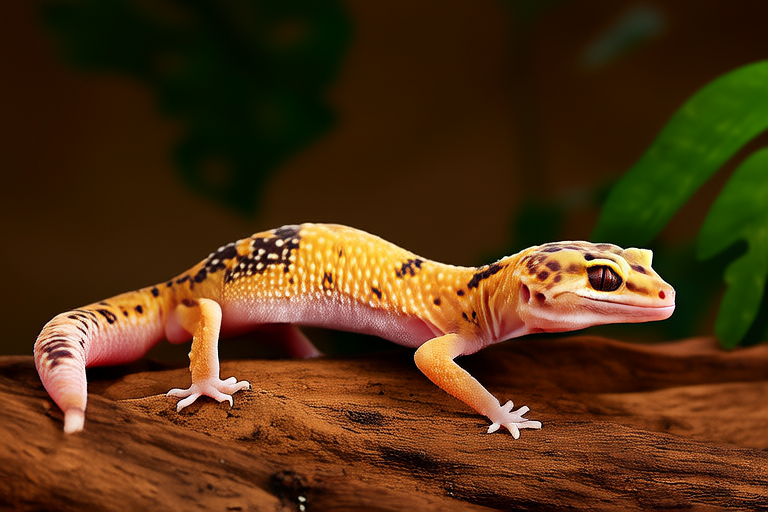The Ultimate Guide to Breeding Leopard Geckos: Success Stories and Expert Advice
Leopard geckos have long been one of the most popular reptile pets due to their docile nature, easy care requirements, and vibrant colors. Their unique appearance, with spots that resemble those of leopards, has made them a favorite among reptile enthusiasts. This guide will take you through the process of breeding these captivating creatures, offering insights into successful breeding practices, expert advice, and real-life success stories.
Introduction to Leopard Geckos
Leopard geckos (Eublepharis macularius) are native to the arid regions of Pakistan, Afghanistan, and parts of India. They are nocturnal lizards, meaning they are most active at night. These geckos are known for their ability to store fat in their tails, which they can shed as a defense mechanism if necessary. Their docility and ease of handling make them ideal pets for beginners and experienced reptile owners alike.
Essential Factors for Breeding Success
Proper Housing
To ensure the health and well-being of your breeding pair, providing adequate housing is crucial. A minimum enclosure size of 10 gallons per adult gecko is recommended. The enclosure should be secure, with a tight-fitting lid to prevent escapes. Substrate options include paper towels, reptile carpet, or eco-friendly bedding like coconut fiber. Avoid loose substrates such as sand or wood shavings, which can cause impaction if ingested.
Diet
A balanced diet is essential for breeding success. Offer your geckos a variety of insects, including crickets, mealworms, and waxworms. Dust these insects with calcium and vitamin D3 supplements to support bone health and proper growth. Feeding should be done in moderation, ensuring no leftover food remains in the enclosure overnight, as this could attract pests or cause contamination.
Environmental Conditions
Maintaining optimal temperature and humidity levels within the enclosure is vital. Daytime temperatures should range between 88°F and 92°F (31°C-33°C), while nighttime temperatures can drop to 75°F (24°C). Use heat mats or under-tank heaters to achieve these temperatures. Humidity should be kept low, around 30%, to prevent respiratory infections. Providing a hide box and a water dish is also important.
Selecting Healthy Breeding Pairs
Choosing healthy breeding pairs is fundamental to successful breeding. Look for geckos with bright eyes, clear nostrils, and smooth skin without any signs of injury or disease. Males and females can be distinguished by their ventral scales; males have larger, more pronounced preanal pores. Ensure that both sexes are mature, typically around 18 months old, before attempting to breed.
Mating Behaviors and Egg-Laying Processes
Leopard geckos exhibit distinct mating behaviors. During courtship, males may chase females and bite their tails. After mating, females will lay eggs approximately 30-40 days later. Female geckos can store sperm, allowing them to lay multiple clutches of eggs even after a single mating. Each clutch usually contains two eggs.
Success Stories from Experienced Breeders
One breeder, John, shared his experience: “After several unsuccessful attempts, I finally succeeded in breeding my leopard geckos. I learned that consistency in maintaining environmental conditions was key. Another crucial factor was ensuring my geckos had a varied diet rich in nutrients.”
Another breeder, Sarah, added, “Patience is essential. It took me three years to get my first clutch, but it was worth every moment. Watching the eggs hatch and seeing the tiny geckos emerge is incredibly rewarding.”
Incubation Techniques
Incubation requires careful attention to temperature and humidity. Optimal incubation temperatures vary depending on desired sex ratios. Higher temperatures (around 90°F) tend to produce more males, while lower temperatures (around 86°F) favor females. Maintain humidity levels at 80-90% by misting the incubator daily or using damp vermiculite.
Sexing Hatchlings
Sexing hatchlings can be challenging but is essential for managing your collection. One method involves checking the presence of hemipenal bulges near the base of the tail. Males have more prominent bulges compared to females. Alternatively, you can wait until the geckos reach sexual maturity, around 12-18 months, when secondary sexual characteristics become more apparent.
Common Health Issues
Despite best efforts, health issues may arise. Respiratory infections, often caused by high humidity, can be identified by wheezing or mucus discharge. Metabolic bone disease, resulting from calcium deficiency, presents as weak bones or tremors. Regular veterinary check-ups and a balanced diet can help prevent these issues.
Tips for New Breeders
For new breeders, starting small is advisable. Begin with a few pairs and gradually expand your collection as you gain experience. Join local or online reptile communities to connect with other breeders and learn from their experiences. Always prioritize the welfare of your geckos, ensuring they receive proper care and attention.
Resources for Further Learning
To deepen your knowledge, consider reading books and articles on leopard gecko care and breeding. Attend reptile expos and workshops where experts share their insights and answer questions. Online forums and social media groups provide platforms for continuous learning and networking.
